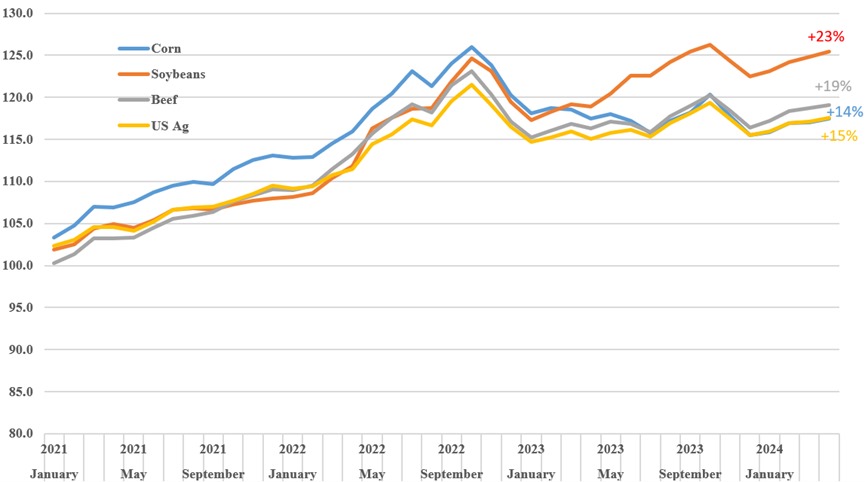The Associated Press’ JoNel Aleccia reported late last week that “a bird flu outbreak in U.S. dairy cows has grown to affect more than two dozen herds in eight states, just weeks after the nation’s largest egg producer found the virus in its chickens.”

Confirmed Cases of HPAI in Domestic Livestock, as of April 23. Courtesy of USDA.
“As of (last) Friday, the strain of bird flu that has killed millions of wild birds in recent years has been found in at least 26 dairy herds in eight U.S. states: Idaho, Kansas, Michigan, New Mexico, North Carolina, Ohio, Texas and South Dakota,” Aleccia reported. That has led “agriculture officials in at least 17 states” to restrict “imports of dairy cattle from states where the virus has been detected, but, so far, government agencies say it’s had little effect on commercial milk production,” Aleccia reported.
Reuters’ Tom Polansek also reported last week that “the U.S. Department of Agriculture said this week that cow-to-cow transmission is a factor in the spread of bird flu in dairy herds, but it still does not know exactly how the virus is being moved around.”
“Officials reported last month that bird flu primarily affected older cows, though additional data now indicates younger cattle have been affected, the USDA said,” Polansek reported.
In addition, the Centers for Disease Control and Prevention reported that “in late March 2024, a human case of influenza A(H5N1) virus infection was identified after exposure to dairy cattle presumably infected with bird flu,” though no further human cases have been reported.
Most recently, Reuters’ Manas Mishra and Jasper Ward reported Tuesday that “the U.S. Food and Drug Administration said on Tuesday that it had found bird flu virus particles in some samples of pasteurized milk, but said commercial milk supply remains safe. The FDA said that because the milk is pasteurized, it remains safe for human consumption as the process kills harmful bacteria and viruses by heating milk to a specific temperature.”
“The agency said it has seen nothing that would change its assessment that the commercial milk supply is safe, adding that results from multiple studies will be made available in the next few days to weeks,” Mishra and Ward reported.
USDA Working on Vaccine
While the CDC said that common antiviral medication would be effective in treating cattle infected by H5N1 bird flu, Abbott reported in a different article last week that “the Agriculture Department said its research agency ‘has begun to assess the potential to develop an effective vaccine’ against the H5N1 bird flu virus in cattle, although it warned that it is too early to say how long the process would take.”
“Vaccine manufacturers have expressed interest in developing vaccines for H5N1 in poultry and cattle, said APHIS,” according to Abbott. “’We will continue to engage with those developers to better understand their vaccine development, the efficacy of potential vaccines, as well as the cost of development and production.’”
“For some time, the USDA has explored an HPAI vaccine for poultry,” Abbott reported. “However, using a vaccine would imperil egg and poultry meat exports because it is currently impossible to identify products from infected animals. Vaccinating flocks would be time consuming and expensive, since there are tens of millions of chickens and turkeys. By contrast, there were 8.9 million dairy cows at latest count.”
While the United States is still exploring a vaccine, the French government launched “a campaign (last) October to vaccinate all ducks against bird flu, braving trade barriers from countries that fear the virus could spread without being noticed,” Reuters’ Sybille De La Hamaide reported at the end of March. “…France has seen a sharp fall in bird flu outbreaks this season. Scientists say this is due both to vaccination and a lower number of outbreaks in Europe.”
Source : illinois.edu